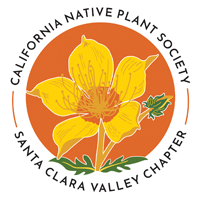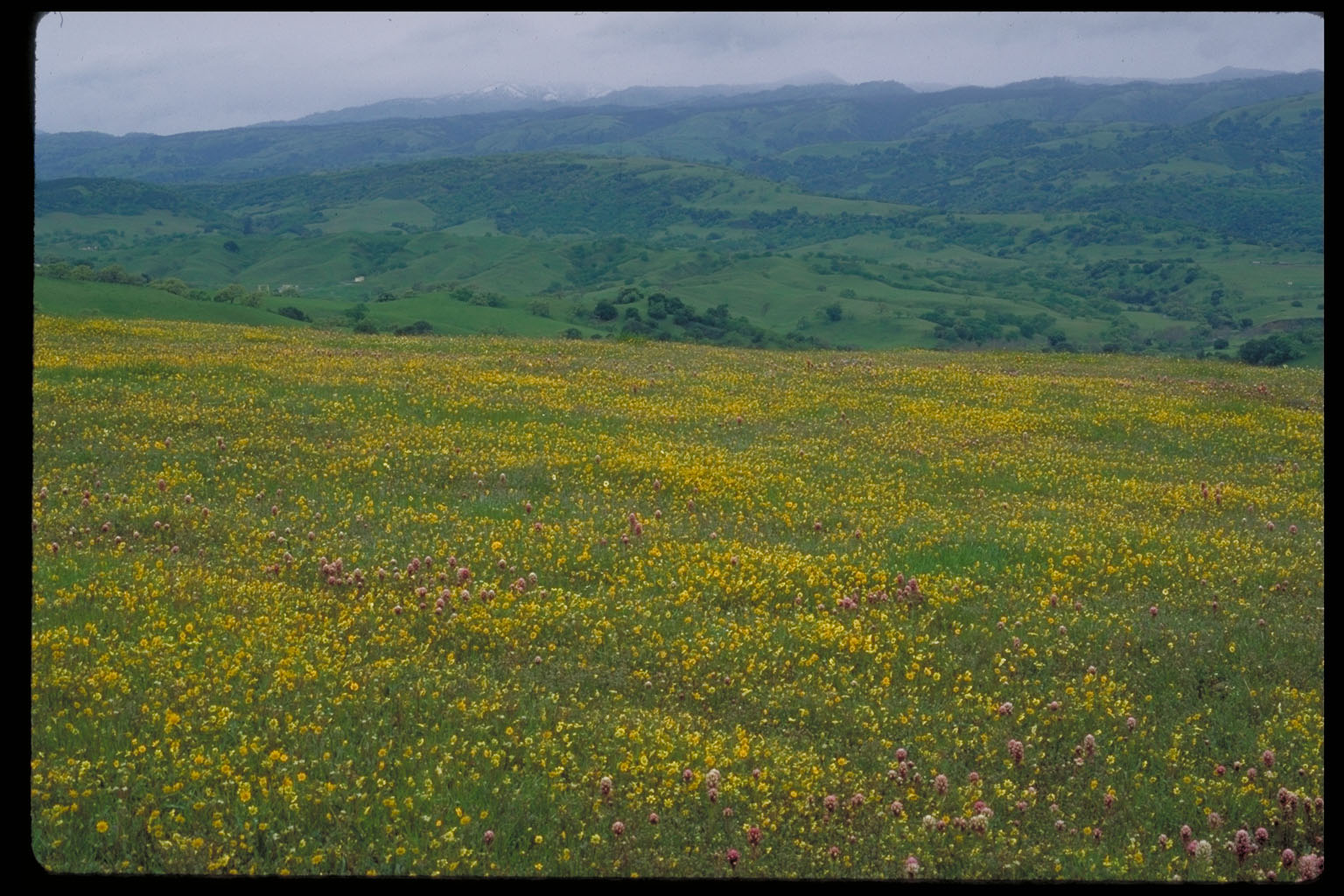Special Status Plants of Coyote Ridge
This area contains at least fifteen plants identified by the California Native Plant Society as rare or endangered. Five of these are on a federal listing of endangered plants: the Santa Clara Valley dudleya, the coyote ceanothus, the Tiburon Indian paintbrush, the Mt. Hamilton thistle, and the Metcalf Canyon jewelflower.
|
Species |
Legal Status |
Distribution |
Habitat |
|
big-scale balsamroot |
CNPS List 1B.2 |
Tehama to Santa Clara Counties |
grasslands, |
|
Tiburon Indian paintbrush |
Federal: Endangered |
Coyote Ridge & Marin & Napa Counties |
serpentine grasslands |
|
coyote ceanothus |
Federal: Endangered |
Santa Clara County |
serpentine grasslands |
|
Mt. Hamilton thistle |
Federal: Endangered |
Alameda to Santa Clara to Stanislaus County |
serpentine seeps and ravines in valley and foothill grassland |
|
Santa Clara Valley Dudleya |
Federal: Endangered CNPS List 1B.1 |
Santa Clara County |
serpentine grassland |
|
Franciscan wallflower |
CNPS List 4.2 |
Marin to |
valley and foothill grassland, serpentine or granitic |
|
fragrant fritillary |
CNPS List 1B.2 |
Marin to Solano to Monterey County |
heavy soils, open hills and fields |
|
Loma Prieta hoita |
CNPS List 1B.1 |
Contra Costa to Santa Clarato Santa Cruz County |
chaparral, woodland |
|
smooth lessingia |
CNPS List 1B.2 |
Santa Clara County |
serpentine grasslands |
|
serpentine linanthus |
CNPS List 4.2 |
Contra Costa to |
mostly serpentine grasslands, coastal scrub and foothill woodland |
|
large-flowered linanthus |
CNPS List 4.2 |
Sonoma to |
open grassy flats |
|
Hall's bush mallow |
CNPS List 1B.2 |
Alameda to |
serpentine chaparral |
|
woodland monolopia |
CNPS List 1B.2 |
Contra Costa to Monterey County |
serpentine grassland |
|
Metcalf canyon jewelflower |
Federal: Endangered CNPS List 1B.1 |
Coyote Ridge |
serpentine grassland |
|
most beautiful jewelflower |
CNPS List 1B.2 |
Alameda to San Luis Obispo Counties |
valley and foothill grassland, |



